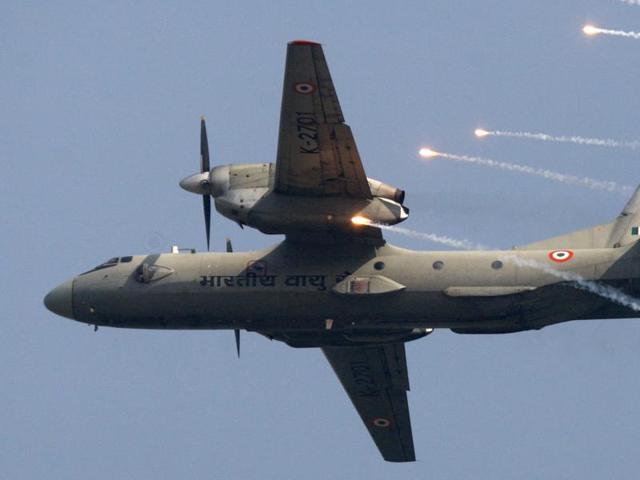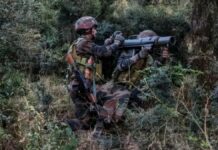One hot day of the infamous Delhi Summers, as i hurried from Subroto Park to attend a meeting at the Indian Air Force HQ, Vayu Bhawan, in Delhi, my mind raced through the strategic importance of the meet that I was chosen to attend.
Briefing me, the CO had advised, “Some very senior Officers from a number of Defense and Civil Organisations will be there. A few IAS and IRS Officers from the Ministry Of Defense are coming. The meeting is being held to chart out a road map for the indigenous manufacturing of a medium transport aircraft.”
Cautioning me with a cynical smile he added, “We know you are enthusiastic and a strong protagonist of indigenisation, but let me tell you that aircraft manufacturing is an altogether different ball game” In the same tone he went on to add, “So don’t go overboard with your suggestions and your timelines. Let the MOD representatives decide the pace“. It was the last sentence that kept me thinking.
To elaborate, the Year was 2001 and the aircraft proposed to be indigenously developed and manufactured in India was a medium haul transport aircraft with a capacity of 100 to 120 passengers.
The planning was indeed visionary and if implemented could have changed the course of Indian Defense Manufacturing in the coming decades.
A prototype was to be readied by approx 2008-2010 that could go into active production by 2012. Though sitting in 2001, 10 years of advanced planning was still late for the design to manufacturing cycle of an aircraft, but the excitement of India building a transport aircraft was all over me.
Uttar Pradesh Police Outshines Counterparts In Professionalism & Promptness
‘We will be able to even export it to many other countries and thus tide over the perennial foreign exchange problems’, I muttered to myself. The news of the often dwindling forex reserves worrying the govt’s, that I grew up knowing till 2001, were fresh in my mind.
The need and criterion to zero down on these broad guidelines had risen from the impending requirement of replacing the already ageing fleet of An-32’s that were slated to be finishing their first leg of calendar life by the year 2008 – 2010. So the entire effort was to match this phase out of the Antonov’s with the induction of the indigeneously developed MTA’s.
The Soviet-origin Antonov 32 aircraft are the tactical short haul transport workhorse of the Indian Air Force and have been vital in maintaining and supplying troops in the far eastern and northern borders. Totalling about 104 and stationed at squadrons located across the length and breadth of India, the 80’s purchase by the IAF had become the aircraft-on-call for most IAF transport, disaster-relief and special operations missions.
The meeting started late, waiting for the quorum to complete, even though it didn’t till the end. While most of the Air Force and Army guys could reach in time, it was the MOD’s civilian representatives that were missing.
As we waited and chatted informally, I remember our Director, an Air Vice Marshal ranked officer, also exuberating the same enthusiasm as a much younger me, telling the HAL and the DRDO reps, “How lucky can we be that while the aircraft hasn’t even been designed, the nation has already placed faith in us with a confirmed order of approx 80-100 aircraft from the Indian Air Force alone.” Everyone agreed and even came up with the names of several civil airlines, like Sahara that were sure to place orders within the country.
As the meeting started and reached its conclusion, I could feel the enthusiasm in me, ebb a bit. The conduct of the highly reverred and most senior of persons seemed to have been not at par with my personal expectations. The hush talks of the MOD representatives deliberately not making it to the meeting confused me. The very next moment, the reasons for this behaviour by some of us started unravelling.
Not that I wasn’t aware of all that went into, behind the scenes in decision making, It was just that I started experiencing it first hand as an upright Squadron Leader then.
Many doubts further got cleared over the next couple of meetings that were fixed, only to be either cancelled or postponed like the dates in an Indian Lower Court Judiciary. Every possible effort to meet up for such an important project for the nation, only got scuttled with a brilliant circumstantial burial.
The AN-32’s in the meantime, started approaching their phase out dates. The intelligentsia came up with one brilliant idea after another requiring appropriate overhauls and life extensions in steps, of the entire fleet. The same were already there in the overhaul manuals supplied by the vendor. This was projected as a saving to the exchequer of millions of dollars as it could extend the life of the aircraft by another two to four decades without going into the need for the fleet replacement.
However, in the process, the very idea to get an indigenous aircraft manufacturing plant in India took a temporary back seat.
Entire teams went to and fro to Kiev deciding on the workscope of the life extensions, the extra stocks of spare parts needed for the interim etc etc. Many others, from the MOD and signatories to these arrangements also seemed happy about the way things moved.
As I realized, everyone seemed to have shut the Indigenised production and manufacturing out of their mind. It was here that one got to understand the disinterest shown from the top to bottom, in raising any aircraft production line in India. As one of the senior guys, having become familiarized with me from the MOD confided, “Look man! Visiting Kiev or Brazil, will remain your dream forever, if India starts manufacturing its own aircraft.” Embraer happened to be from Brazil and was also then, being evaluated for the IAF’s Com Squadron based out of Palam for limited VIP activity. Awestruck, I had no words to reply back. These were the people in whose hands the future of a glorious dream, that was India rested. The realities of life came dancing back to me and the mystery of the cynical smile of my CO stood explained.
No wonder, no eyebrows go up as its common knowledge in the corridors of Power, to hold back crucial decisions for seeking favours, varying from as low as a treat in a 5 Star to as big as multi crore untraceable transfers to the safety of bank a/c’s located in other countries that become a part of the darkness that often shrounds such deals forever.
An indigenous manufacturing, thus finds few nationalistic facilitators as it will eventually seal the sweet nothings mentioned above that most in the decision making process start claiming as a matter of right. No less than a scam, this.
Coming back to our topic, having once lost on the opportunity of developing and manufacturing an aircraft indigenously, the requirements over the next few years got diluted and instead of going for the design and production independently, India ended up signing a joint design and production of the Multi-role Transport Airplanes (MTAs) that were originally envisaged.
Even this served as a ‘saving grace’, keeping in mind the limited design capabilities that India had and that it did indeed need some hand holding for such an ambitious project being undertaken for the first time.
Still a cause to celebrate, the agreement was signed in May 2012 under the aegis of the UPA Government, between United Aircraft Corporation of Russia and India’s Hindustan Aeronautics Limited. The aim was to co-develop and produce a new multi-role aircraft, referred as the UAC/HAL II-214 Multi-role Transport Aircraft by the year 2019.
Both UAC and HAL were 50:50 partners in this aircraft project and a new company Multi Role Transport Aircraft Ltd. was registered. The company would have had manufacturing facilities in both the countries. Both countries also earmarked $300 million each for the first phase of the project.
Initially the plan was to make 205 aircraft some of which can be exported to other countries. While Russia will take delivery of 100 aircraft so produced jointly, India will have 45 as per initial plans.
Come 2015, with BJP government at the centre, both sides bogged down, unable to agree on a detailed design of the new transport plane and the project stalled. One of the major stumbling blocks was the Russian selection of the engine for the aircraft with UAC insisting on PS-90A turbofan as the better solution, whereas HAL wanting a new powerplant that included Fadec. A trivial matter that couldn’t be resolved to save a bilateral agreement between two giant nations boasting of half a century of military cooperation and strategic ties. Ironical indeed.
Thus in January 2016, the deal was considered to be as good as dead. While the Russian side did issue a statement, none from the Indian side admitted officially and the final report of the deal being scrapped was published on 28 March 2017 which read “India-Russia Aircraft Deal Terminated”.
To overcome the embarrassment of a bungled up project, that could raise many an eyebrows, with some even demanding an investigation, the Chief of the Indian Air Force Air Chief Marshal B. S. Dhanoa immediately announced that the Ministry of Defense will begin contract negotiations for the purchase of 56 Airbus Defence and Space (DS) C295 medium transport aircraft with European defense contractor Airbus. This statement drove the final nail into the coffin of the MTA deal and was to be taken as an official confirmation. However critics continue to question the intent of the govt at the hush hush nature of scrapping a national dream project.
Though it is difficult to say with certainty, what led to the death of such an aspiring project that had taken almost 10 years of hard work, time and resources to fructify into a deal and that was slated to change the destiny of India Defense Manufacturing.
To throw more light on the developments. The deal for the joint design and development of the MTA was signed in 2012 under the then UPA govt. However with the Narendra Modi govt taking charge in 2014 and the subsequent disagreements over the issue of finalising a Engine as mentioned above and the stalemate that followed, that could not be resolved, all point a finger at some amount of political complicity that led to the deal going dead.
In the meanwhile, the Indian Air Force’s fleet of Antonov AN-32 transport aircraft continued to undergo a major midlife upgrade extending their service lives by 20 to 40 years.
While it can be argued that the AN-32 upgrade did reduce the urgency to replace the fleet and introduce new transport aircraft, but it will be a folly to deny the nation the once in 70 years opportunity to develop the capability to manufacture transport aircraft indigenously. More so this could have opened the possibility of exporting the surplus and earn forex. Furthermore the MTA project had the advantage of mitigating the risks of failure as the Russia’s UAC was an experienced partner that was to see us through till the end and thus was making the project ‘Fail safe’.
DRDO Successfully Develops A Weapon Locating Radar, Hands Over To Army
The cost for the upgrade of 104 AN-32 transport aircraft is about $400 million and includes fitting the aircraft with “improved avionics, modernization of the cockpit, and a payload capacity increase from 6.7 to 7.5 ton. This laid bare the possibilities of kickbacks and what was feared comes closer to reality with the recent Ukrainian Anti-Corruption Bureau investigating alleged kickbacks to the tune of $2.6 million (Rs 17.55 crore) in India’s purchase of spares for An-32.
The agency suspects the involvement of Indian Defence Ministry officials and through the Indian evnoy in Kiev had approached the Ministry of Home Affairs seeking help for the identification of the Defence Ministry officials who participated in the negotiations, development, signing and implementation of the contract.
As the row with Ukraine gets nastier, charges of Indian MOD Officials having taken kickbacks worth Rs 17.5 crores, fly high. The latter on its part insisting that terms of acknowledgement having not been fulfilled, the mud slinging goes on.
No wonder the Scam that it was since the beginning, had just been waiting for the right spark to blow up, and the spark came from nowhere other than our own partner in arms, Ukraine.
~ News4masses is now also on Google news
~ If you want to contribute an article / story, please get in touch at: news4masses[at]gmail[dot]com



















